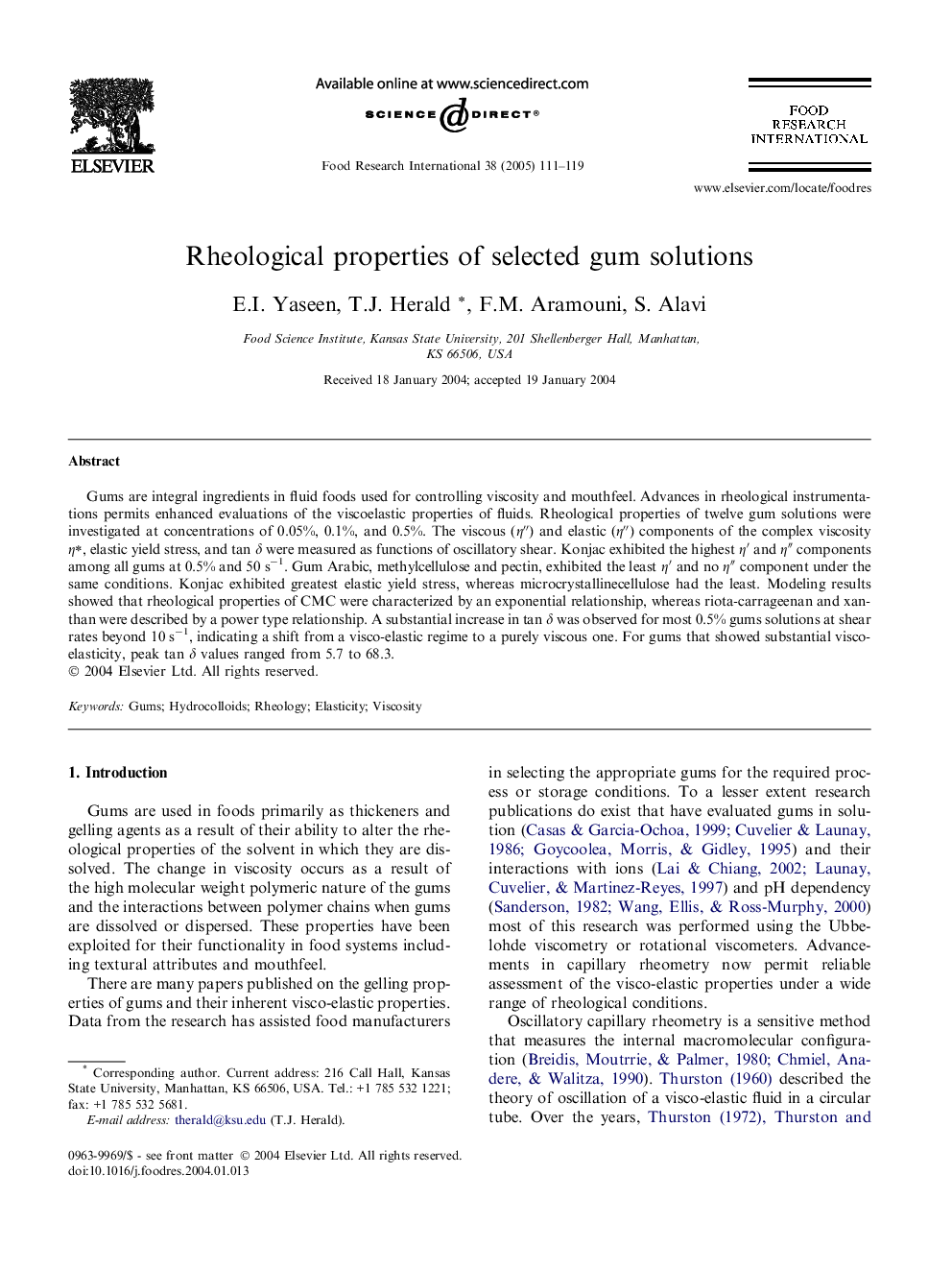| Article ID | Journal | Published Year | Pages | File Type |
|---|---|---|---|---|
| 9487447 | Food Research International | 2005 | 9 Pages |
Abstract
Gums are integral ingredients in fluid foods used for controlling viscosity and mouthfeel. Advances in rheological instrumentations permits enhanced evaluations of the viscoelastic properties of fluids. Rheological properties of twelve gum solutions were investigated at concentrations of 0.05%, 0.1%, and 0.5%. The viscous (ηâ³) and elastic (ηâ³) components of the complex viscosity ηâ, elastic yield stress, and tan δ were measured as functions of oscillatory shear. Konjac exhibited the highest ηⲠand ηⳠcomponents among all gums at 0.5% and 50 sâ1. Gum Arabic, methylcellulose and pectin, exhibited the least ηⲠand no ηⳠcomponent under the same conditions. Konjac exhibited greatest elastic yield stress, whereas microcrystallinecellulose had the least. Modeling results showed that rheological properties of CMC were characterized by an exponential relationship, whereas riota-carrageenan and xanthan were described by a power type relationship. A substantial increase in tan δ was observed for most 0.5% gums solutions at shear rates beyond 10 sâ1, indicating a shift from a visco-elastic regime to a purely viscous one. For gums that showed substantial visco-elasticity, peak tan δ values ranged from 5.7 to 68.3.
Related Topics
Life Sciences
Agricultural and Biological Sciences
Food Science
Authors
E.I. Yaseen, T.J. Herald, F.M. Aramouni, S. Alavi,
